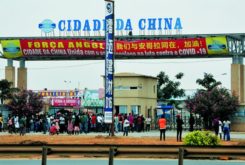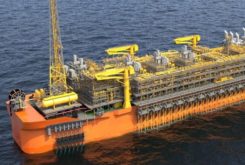Because of its tight financial situation, the Angolan government has decided on partial privatisation of three major railway routes, sources said.
It needs to implement major improvements to its railways in order to benefit from their excellent location, experts said. They can provide a good means of transportation to neighbouring countries, like Zambia and the Democratic Republic of Congo.
The sources told us that the government favoured a partial privatization instead of agreements with regional partners that would manage the three lines. They cross the country from East to West – the Benguela (CFB), Luanda (CFL) and Moçâmedes (CFM) railways.
On a recent visit to Germany, President João Lourenço tried to interest German companies in the privatization of the CFB, our sources added.
South African railway operators are also being considered by the Government. They have the financial and technical qualifications to manage the railways.
This choice of privatisation replaces a policy, before the 2014 economic and financial crisis, of entrusting directly the three routes to consortia of public-private partnerships; the Angolan shareholders in them belonged to the senior political elite.
A recent technical (confidential) report on the state of the country’s main railways, seen by CL Brief, concluded that the Benguela Railroad (CFB) did not meet the technical standards to be used as the main route for export of ore from the “Copper Belt” in the Southern African hinterland.
The report described the operational and logistic limitations of the CFB as a route for the Copper Belt ore produced in the DR of Congo. The tracks only allow the formation of trains of about 320 metres (locomotive and 23 wagons) — considered too small to make the operation financially viable.
Another issue is the rolling stock: the CFB´s wagons are not designed to carry ore in either of the most widely used forms — bagged copper concentrate, bars/plates tied in pallets or containers.
The transport of ores from the Copper Belt to the port of Lobito became the main source of revenue for the CFB after 1929, when the route reached Luau at the border; it connected Angola to neighbouring countries in the East.
The CFB is the shortest, most direct and cheapest way out of the Copper Belt ore. The alternative is the Tanzania-Zambia Railway Authority (Tazara), whose terminus is the Dar-es- Salaam port in Tanzania.
Copper and zinc production from the Copper Belt – a vast area of great mining potential shared by the DR Congo and Zambia — is about to increase; the Kamoa deposit in the Congolese province of Kolwezi will start operating.
It is estimated that between 300,000 and 1,000,000 tons of Kamoa zinc copper could be shipped to the port of Lobito through the CFB by 2020, if the route could properly handle the load.
The study concluded that, to enable the CFB to deal with this expansion, it would be necessary to rehabilitate the track along the entire length of 1,344 kilometres between Luau and the port of Lobito and put in place a permanent track maintenance system.
It also recommended the acquisition of 2,500 freight wagons to transport various forms of cargo — bulk, containerised, tanks or platforms. As new or re-conditioned, the wagons would cost US$150 million; in addition, investment would be needed to create maintenance centres.
The three Angolan railways currently use Chinese locomotives and rolling stock, as well as 100 General Electric (GE) model GE30AC locomotives; 63 are to be delivered by the end of 2018. They were bought in 2013, about four years after the rehabilitation of the three railways by China.
The CFB was extensively destroyed during the civil war. It was rehabilitated with the financial and technical support of China International Fund (CIF). The work was carried out by Chinese companies; the rolling stock was supplied entirely by China and maintenance of the track and rolling stock was taken over by Chinese companies.
The Luanda Railroad (CFL) and the Moçâmedes Railroad (CFM), the two other major railways in Angola, were also rehabilitated through contracts with CIF.
Total investment on the tracks, excluding rolling stock, is estimated at US$3.5 billion, including US$1.8 billion on the CFB, US$600 million on the CFL and US$200 million on the CFM.
The three routes operate at only 20 per cent of capacity. This is due to conceptual problems, aggravated by a lack of maintenance and supervision, organisational difficulties and a low level of skill of the Angolan personnel.
As a result of these low operating rates, the three lines have accumulated large deficits. The revenues do not even cover staff salaries.
In Angola’s environment of budgetary constraints, the large operating deficits of the three companies and the financial obligations arising from the investment in its rehabilitation and acquisition of rolling stock are considered a heavy burden for the state.



